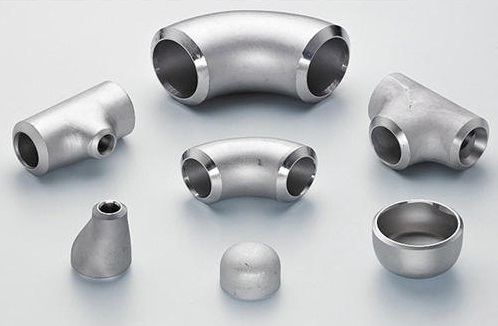In industries like oil and gas, power generation, chemical processing, and shipbuilding, having strong and durable piping systems is very important. One of the key components used in such piping systems is stainless steel 347 forged fittings. These fittings are known for their high strength, corrosion resistance, and ability to perform well under high temperatures and pressure. But what makes these fittings reliable? The answer lies in their manufacturing standards.
This blog aims to explain the manufacturing standards followed during the production of stainless steel 347 forged fittings in a simple and easy-to-understand way.
What Are Stainless Steel 347 Forged Fittings?
Before we talk about the standards, let’s understand what these fittings are.
Forged fittings are pipe connection components made by shaping metal under high pressure. They are stronger than cast or machined fittings and are used in piping systems that require extra safety and durability. Stainless steel 347 is a special grade of stainless steel that contains columbium (also called niobium). This element helps the steel resist corrosion and heat, making it ideal for high-temperature applications.
So, when we say stainless steel 347 forged fittings, we are referring to strong, high-performance fittings made from this specific steel grade, shaped using the forging method.
Why Are Manufacturing Standards So Important?
Manufacturing standards are rules and guidelines that ensure the quality and safety of a product. In the case of stainless steel 347 forged fittings, these standards are crucial because:
-
They ensure material strength and durability
-
They help in avoiding product failure
-
They maintain safety in high-pressure systems
-
They ensure compatibility with other components
-
They improve the service life of the fitting
Without following the right standards, fittings might crack, leak, or fail under pressure — causing damage and putting people at risk.
Key Manufacturing Standards and Processes
Here are the main steps and standards that are usually followed in the production of stainless steel 347 forged fittings:
1. Material Selection and Testing
The first step is choosing the right material. Only high-quality stainless steel 347 is selected, and it is tested to make sure it meets the required chemical composition. The steel must have the correct amount of chromium, nickel, and columbium to offer the expected heat and corrosion resistance.
Material testing is done to check:
-
Chemical composition
-
Mechanical strength
-
Corrosion resistance
This step ensures the raw material is fit for high-temperature and corrosive environments.
2. Forging Process
Forging involves heating the stainless steel and shaping it using high-pressure hammers or presses. This process changes the shape of the steel without changing its solid state. Forging improves the metal’s grain structure, making it stronger and tougher.
Stainless steel 347 forged fittings go through:
-
Hot forging, which is done above the steel’s recrystallization temperature
-
Closed-die forging, to achieve accurate shapes and sizes
-
Flash trimming, to remove excess metal after shaping
Forging ensures that the fittings have no internal voids or weak spots.
3. Heat Treatment
After forging, the fittings are heat-treated to remove stress and increase strength. This process includes:
-
Annealing, to soften the metal and improve machinability
-
Quenching, to cool the metal quickly and lock in strength
-
Tempering, to balance hardness and toughness
Heat treatment makes sure the stainless steel 347 forged fittings can withstand high-pressure and high-temperature conditions.
4. Machining and Shaping
Once the metal is forged and heat-treated, it is machined to get the final shape and size. Common fittings include:
-
Elbows
-
Tees
-
Couplings
-
Unions
-
Reducers
Machining must follow tight tolerances to ensure a perfect fit with pipes and other fittings. Precision in this stage is important to prevent leaks and ensure a strong connection.
5. Surface Finishing
A smooth surface finish is essential, especially for fittings used in industries like food processing or pharmaceuticals. The fittings are cleaned, polished, and checked for surface defects.
Proper surface finishing helps:
-
Reduce the risk of corrosion
-
Improve appearance
-
Ensure safety in hygienic environments
Stainless steel 347 forged fittings must be free from rust, scale, sharp edges, or cracks.
6. Pressure and Leak Testing
Each fitting is tested to ensure it can handle the pressure it is rated for. Common tests include:
-
Hydrostatic testing: Water pressure is applied to check for leaks.
-
Pneumatic testing: Air pressure is used to test fitting strength.
-
Non-destructive testing (NDT): Methods like ultrasonic or radiographic testing are used to find internal cracks or flaws without damaging the fitting.
These tests confirm that the fittings are safe and reliable for real-world use.
7. Marking and Documentation
Every stainless steel 347 forged fitting is marked with essential information such as:
-
Size and type
-
Pressure rating
-
Material grade (SS 347)
-
Heat number for traceability
Proper documentation, including material test reports and inspection certificates, is provided to the customer. This ensures full transparency and quality assurance.
Benefits of Following Manufacturing Standards
When fittings are made according to set standards, the end user enjoys several benefits:
-
Improved safety in all applications
-
Consistent product quality
-
Longer service life, even in tough conditions
-
Less maintenance and downtime
-
Full compatibility with piping systems
Whether it’s for oil pipelines or steam lines in a factory, stainless steel 347 forged fittings that follow manufacturing standards offer peace of mind and long-term value.
Final Thoughts
To sum up, stainless steel 347 forged fittings are not just regular pipe fittings — they are high-performance components that are made under strict guidelines and processes. From choosing the right material to final testing, every step is important to ensure that these fittings are strong, safe, and reliable.
If you’re planning to use these fittings in your projects, make sure they meet all the proper manufacturing standards. This will ensure not only the safety of your system but also better performance and durability in the long run.






